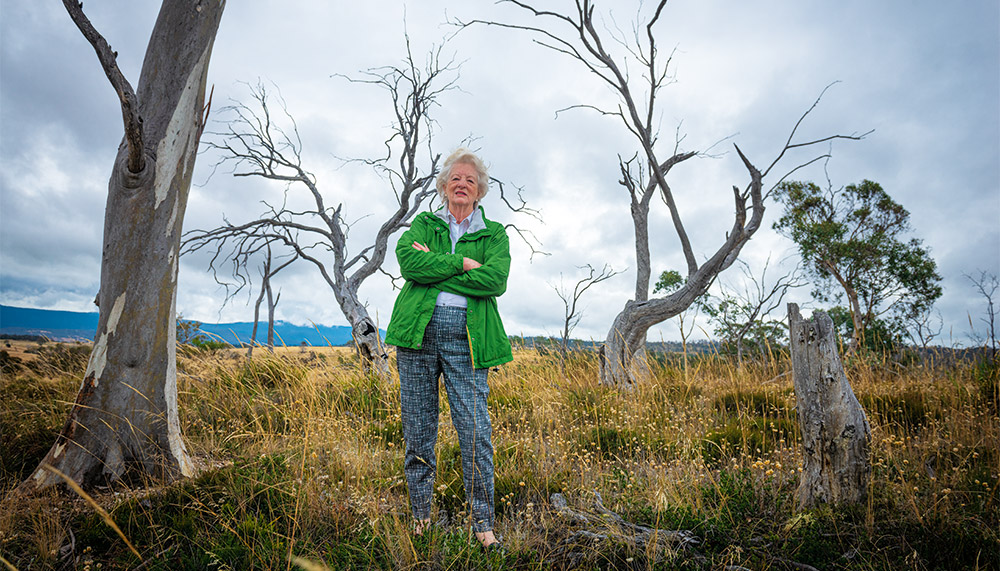Rare plants and animals are being preserved in Tasmania’s Midlands under the voluntary scheme of the Midlands Conservation Fund.
Story + photos Don Fuchs
Valerie Le Maitre owns two neighbouring agricultural properties in the Midlands of Tasmania – Lochiel and Wetmore – running cattle and producing lucerne, ryegrass, opium poppies, wheat, barley and oats. But it’s not stock or crops she’s interested in today. Immaculately dressed, she’s on her knees, pushing aside grass to reveal the tiny blue flower of a parson’s band, a leafless orchid. This small fenced-off hill within her 3642ha property is special, quarantined from her agricultural pursuits.
“We do have some rare species, and I take the attitude that if I conserve them and that that conservation doesn’t reflect badly on my ability to run the business, why not?” she says. “I don’t actually promote myself as a conservationist; I promote myself as a farmer. But if it’s in a non-productive area and the plants are surviving there, I’m happy to fence it off.” Besides the orchids, there are blossoming waxflower bushes, and cabbage gum saplings are coming up everywhere on this patch of remnant vegetation.
Valerie is joined by ecologist Matt Appleby, who works for Bush Heritage Australia and provides advice on plants and animals for the landowners under the Midlands Conservation Fund (MCF). His work helps identify areas within properties with high conservation value. “Bush Heritage and the Tasmanian Land Conservancy got together to form the Midlands Conservation Fund,” he explains. “The fund pays landowners an annual stewardship payment for looking after those areas.”
This story excerpt is from Issue #139
Outback Magazine: October/November 2021










